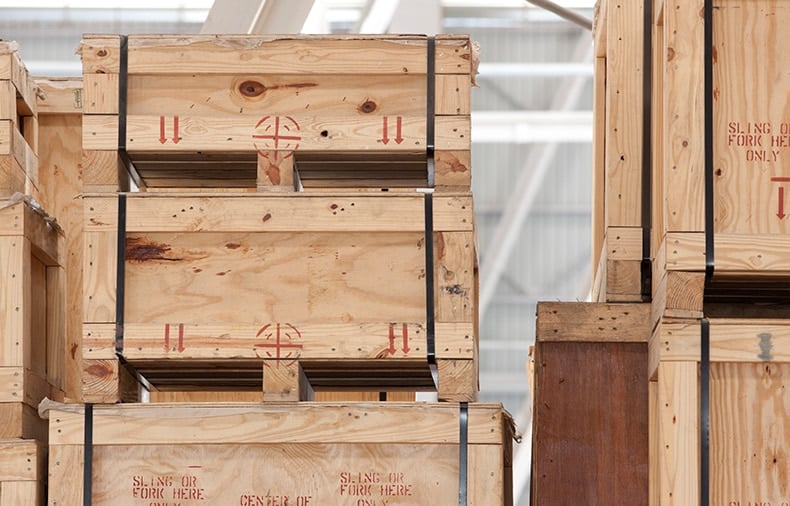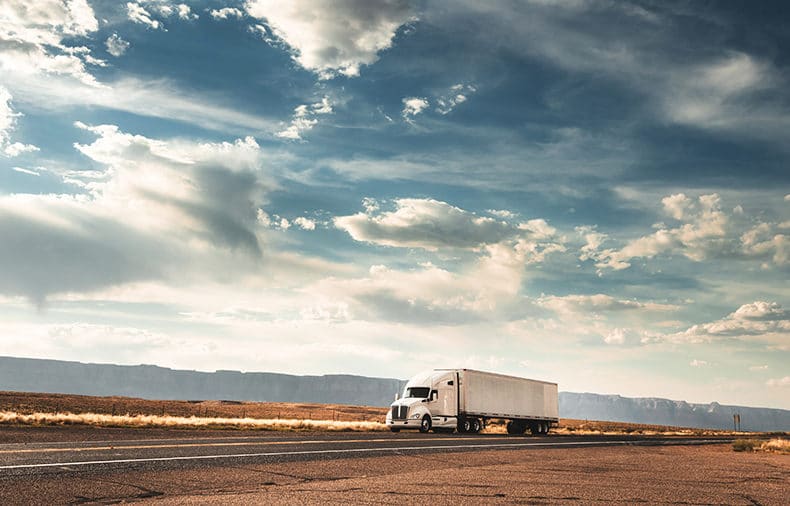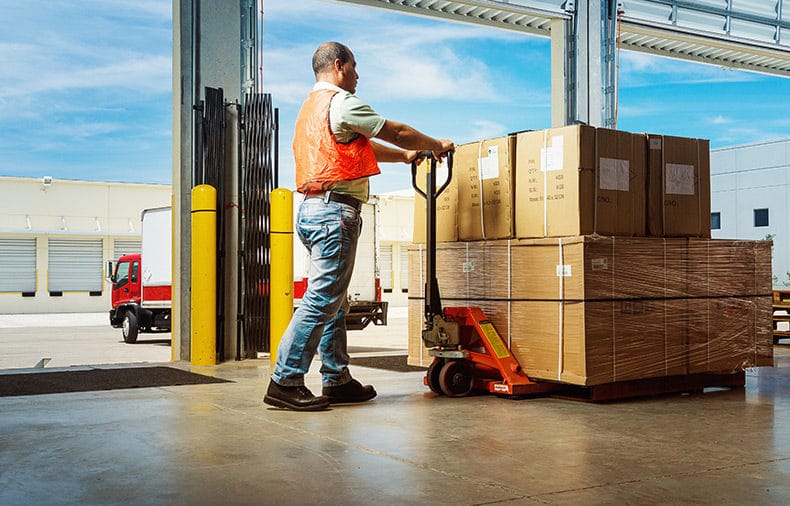WHAT IS FBA?
FBA stands for “Fulfillment by Amazon.” Specifically, FBA is a service provided by Amazon to assist sellers on the platform. The service includes storage, packaging, and shipping assistance to sellers allowing for a seamless Amazon experience for both buyers and sellers.
FBA allows sellers to transport their products and merchandise to Amazon fulfillment centers around the United States to be stored until they are sold. Once a product is sold, Amazon employees prepare, pack, and ship the products to the customer. By using FBA, Amazon sellers can offer Prime two-day and same-day delivery to their customers.
But how does it all work?
The remaining portion of this FBA shipping guide should clear up any uncertainty. First you will learn how to package products and how to ship them. Then you will learn how to create an Amazon Seller account, followed by learning how to create your shipment to FBA on uShip.
Let’s get started.
Benefits of FBA Services
Amazon sellers can enjoy many benefits by utilizing Fulfillment by Amazon. These benefits include:
- Amazon Customer Service: Amazon offers 24/7 customer support on behalf of FBA sellers, including inquires, refunds, returns, and more.
- Standardized Shipping: Amazon processes all FBA shipments like its own merchandise.
- Multi-Channel Fulfillment: Amazon can store merchandise at its fulfillment centers, ship products, and manage inventory sold through other channels.
- Prime Audience: FBA allows your customers to enjoy all prime benefits, such as same-day and two-day shipping.
- Subsidized Shipping Fees: Amazon can ship your items at a lower cost than you would be able to on your own.
- Products Associated with Amazon’s Branding: Having Amazon’s name associated with your products will help you gain consumers’ trust as a seller.
FBA Drawbacks
While Fulfillment by Amazon offers many benefits, there are some drawbacks to consider. Some FBA drawbacks are:
- Returns: Due to the ease of returning items purchased from Amazon, return rates are typically higher as an FBA seller.
- Challenging Product Guidelines: Amazon has very specific guidelines around shipping to FBA to ensure they arrive in excellent condition.
- High Fees: From fulfillment and storage fees to removal and disposal fees, FBA can cost more than you bargained for.
- Amazon Handles Products: Sometimes shipments can be damaged due to mishandling by Amazon employees during the shipping process. In most cases, Amazon will reimburse you for the costs associated with the damage; however, you’ll want to keep good records just in case.
- Commingling: If you sell the same product as another seller, Amazon will mix the inventory together. While rare, this can lead to fraud.
FBA Service Fees
As mentioned above, FBA members are charged high fees for the service. Those fees include:
- Seller Fees: Amazon charges 15-18% of your product price when an item is sold.
- Fulfillments Fees: Fulfillment fees vary and are charged per unit.
- International Shipping Fees: Amazon offers a Global Export option, allowing you to ship your inventory globally.
- Storage Fees: Amazon charges a monthly storage fee based on various product factors such as space required, size, and sales volume.
HOW TO SHIP TO AMAZON FBA
There are many ways to ship products to Amazon; however, this guide primarily focuses on shipping pallets via LTL or FTL freight. LTL stands for less than truckload, while FTL stands for full truckload.
You would use LTL when you do not need an entire trailer for your shipment. On the other hand, you would use FTL if your products need a full trailer.
Don’t worry; this guide covers this topic later on. For now, let’s dive deeper into FBA shipping. Regardless of whether you use FTL or LTL, you will need to place your products on a pallet. Keep reading to learn how to ship to Amazon FBA.
SHIPPING PALLETS TO AMAZON FBA
There are many important things you need to know when it comes to shipping pallets to Amazon:
- Shipment ID: A single pallet must have the same shipment ID on every box. No exceptions.
- FBA Labels: Each box on a pallet requires an FBA provided label.
- Minimum Total Shipment Weight:The total weight of your FBA shipment (combined pallet weight) must be at least 150 lbs.
- Single Pallet Max Weight: A single pallet may not exceed 1,500 lbs.
- Pallet Material: Pallets shipped to Amazon FBA must be made of grade B or higher wooden pallets. They must be standard size (48×40).
- Overhang: There must be zero product overhang on your pallet. Make sure your boxes are flush with the edges of the pallet.
- Secure Boxes to Pallet: All boxes must be shrink wrapped to the pallet.
- Items Sold as Sets: If your items are sold as a set, and each weighs over 100 lbs, you will need to package them separately on individual pallets.
- Delivery Appointment: Amazon requires that a delivery appointment be scheduled in advance.
- Box Limits: Amazon limits LTL deliveries to 5,000 boxes per shipment.
- BOL Requirements: Place a copy of your BOL on the outside of your pallet before shipping. Also, make sure that the bill of lading includes your Amazon reference numbers, shipment IDs, the seller name, to and from addresses, the carrier name and SCAC code, PRO number, handling units, trailer and seal numbers, shipper load count (SLC), and freight charge terms.
The above rules come from the Amazon Seller Requirements help page. Be sure to review the Amazon FBA shipping rules and regulations. Amazon will gladly turn your FBA shipment away if it does not meet its standards. This is why it is important to hire a freight company experienced in shipping pallets to Amazon fulfillment warehouses.
USHIP LTL SHIPPING SERVICES FOR FBA SHIPPING
uShip is an online marketplace that connects you with 30+ professional LTL freight carriers. When you use uShip to ship your freight to Amazon, you get world-class customer service.
We have a dedicated freight team that is just an email or phone call away. They are equipped to answer all of your pressing questions and can process rebill audits, refunds, claims, and much more.
uShip is able to offer highly competitive rates due to our lasting relationships with industry-leading carriers.
If you are ready to ship your pallets to Amazon FBA you can go ahead and create a listing on uShip. Otherwise, keep reading for the full FBA shipping process.
THE COMPLETE FBA SHIPPING PROCESS
As promised, here is the complete last-mile FBA shipping process:
1. CREATE AN AMAZON SELLER ACCOUNT
Before you can even ship to an FBA you will need an Amazon Seller Central account. When signing up, Amazon will ask you for the following:
- Business and Contact Address
- Telephone Number
- Credit Card
- Identity Details (personal information)
Once you have established an account, proceed to creating a new product.
2. CREATE A NEW PRODUCT
You will be asked to search for your product’s category. Don’t overthink this part. For example, if you are selling televisions, your category is exactly that. Next, you will need to fill out the details regarding your product. Amazon calls this the Vital Info. It includes the product’s name, brand name, manufacturer, and product ID. Once you are finished with this section you will want to click the offer tab on the same screen. Here you will be able to set your product’s price and choose whether or not you want to use FBA or FBM.
3. SET YOUR FULFILLMENT CHANNEL
The difference between FBA and FBM is pretty straight forward. FBM stands for Fulfillment by Merchant. The merchant is responsible for fulfilling their own orders through Amazon. This means no prime two-day shipping and you will be solving your own customer service issues. On the other hand, FBA (Fulfillment by Amazon) is where Amazon takes care of all the shipping, packing, and customer service-related issues. Since this guide primarily focuses on FBA, we will leave FBM on the back burner for now.
4. ADD PRODUCT DETAILS
On the same screen, you will be able to add photos, product variations, and other important information. When you are finished, go ahead and click Save and Finish. This part can take some time. You will get a warning screen that states the saving process could take up to 30 minutes (it usually takes around 5 minutes). When your listing is ready you will want to go ahead and start working on your Amazon FBA shipping plan.
5. CREATE YOUR AMAZON SHIPPING PLAN
From your Amazon Seller Central Dashboard, click the Inventory tab. You can add even more details about your product here. Go ahead and complete all of the applicable fields and save your work. Next, you will need to select Send/Replenish Inventory. On this page, you will be asked about how your products are packaged and how many units you are sending to FBA. After that, you will be able to print shipping labels and see other important information about your shipment.
Important: Ship your products to the address that Amazon supplies you. If you don’t, they will charge you additional fees.
6. DECIDE ON LTL OR FTL
When you are ready to ship, you will need to decide which type of freight service to use – LTL or FTL. Amazon will not accept a single LTL load of more than 5,000 boxes. If you have more than 5,000 boxes to ship to Amazon you will need to split them into multiple shipments. If that is not an option, you should book a full truckload shipment. LTL shipments are typically under 20 pallets but it is ultimately up to the carrier. For this reason, it is important to hire a 3PL that can help you choose the appropriate fright company for your needs.
7. LOCATE A FREIGHT COMPANY
Once you have decided on a method of transportation, you will want to locate a 3PL that is familiar with the FBA shipping process. A good 3PL will have the following:
- A Knowledgeable Customer Service Team
- Scalability
- A Quality Carrier Base
- Tenure
- A TMS
- A Good Reputation
8. SCHEDULE YOUR FBA SHIPMENT
After you have booked your FBA shipment with a qualified carrier, you will need to schedule an advanced delivery appointment with Amazon. To schedule a shipment, follow these simple steps:
- Ensure that your carrier is registered with Amazon.
- Log into your Carrier Central and request an appointment.
- Amazon will email you within 24 hours to confirm the date and time.
ADDITIONAL TIPS
- Only request appointments when you are ready. You can only request seven appointments for one shipment.
- Amazon won’t accept shipments if an appointment is not scheduled.
- If an appointment window is missed by 30 minutes or more, Amazon FBA will refuse the shipment, and you will need to reschedule.
- If your shipment will be arriving late, notify Amazon about it as they may be able to make arrangements.
As previously mentioned, this is just an introductory guide to FBA shipping. It is important to fully understand Amazon’s rules; the rules are relative to specific business and product types. Please visit the Fulfillment by Amazon webpage for more details.
Ready to Ship to Amazon?
Get Quotes NowRelated Articles

The true FOB meaning represents the concept of “free on board” or “freight on board”. The acronym FOB is both an accounting and shipping term that indicates whether the seller or buyer will pay shipping expenses.

LTL stands for “less than truckload” and is used when freight only takes up a portion of a trailer. FTL stands for “full truckload” and is used when freight requires the use of an entire trailer.

When shipping freight, carriers typically require your goods to be transported on a pallet. Pallets are portable bases used for freight shipping to transport multiple packaged items or containers.